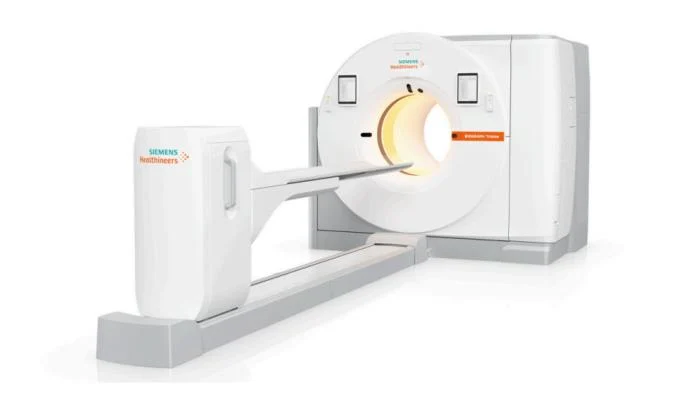What’s New in PET/CT
Early Assessment of Response to Neoadjuvant Chemotherapy with 18F-FDG-PET/CT in Patients with Advanced-Stage Ovarian Cancer.
PET/CT Updates, Research & Education
September 2020
Purpose
The aim of this study was to evaluate the ability of sequential 18F-fluorodeoxyglucose positron emission tomography/computed tomography (18F-FDG-PET/CT) after one cycle of neoadjuvant chemotherapy (NAC) to predict chemotherapy response before interval debulking surgery (IDS) in advanced-stage ovarian cancer patients.
Methods
Forty consecutive patients underwent 18F-FDG-PET/CT at baseline and after one cycle of NAC. Metabolic responses were assessed by quantitative decrease in the maximum standardized uptake value (SUVmax) with PET/CT. Decreases in SUVmax were compared with cancer antigen 125 (CA-125) level before IDS, response rate by Response Evaluation Criteria in Solid Tumors criteria before IDS, residual tumor at IDS, and chemotherapy response score (CRS) at IDS.
Results
A 40% cut-off for the decrease in SUVmax provided the best performance to predict CRS 3 (compete or near-complete pathologic response), with sensitivity, specificity, and accuracy of 81.8%, 72.4%, and 72.4%, respectively. According to this 40% cut-off, there were 17
(42.5%) metabolic responders (≥ 40%) and 23 (57.5%) metabolic non-responders (< 40%). Metabolic responders had higher rate of CRS 3 (52.9% vs. 8.7%, p=0.003), CA-125 normalization (< 35 U/mL) before IDS (76.5% vs. 39.1%, p=0.019), and no residual tumor at IDS (70.6%
vs. 31.8%, p=0.025) compared with metabolic non-responders. There were significant associations with progression-free survival (p=0.021) between metabolic responders and non-responders, but not overall survival (p=0.335).
Conclusion
Early assessment with 18F-FDG-PET/CT after one cycle of NAC can be useful to predict response to chemotherapy before IDS in patients with advanced-stage ovarian cancer.
Source: Cancer Res Treat. 2020 Apr 28. doi: 10.4143/crt.2019.506.
< https://pubmed.ncbi.nlm.nih.gov/32599990> Retrieved 28 August 2020.

September Ovarian Cancer Awareness Month
- Ovarian cancer is the second most common gynecologic cancer in the US and causes more deaths than any other cancer of the female reproductive system.
- The American Cancer Society estimates that there will be over 22,280 new cases of ovarian cancer diagnosed this year and that more than 14,240 women will die from ovarian cancer this year.
- When a woman is diagnosed and treated in the earliest stages of ovarian cancer, the 5-year survival rate over 90%. However, due to ovarian cancer’s non-specific symptoms and lack of early detection tests, only about 20% of cases are found during stage I or II.
Connect with Us
Get additional information and stay up-to-date with the latest news by connecting with us on social media.



